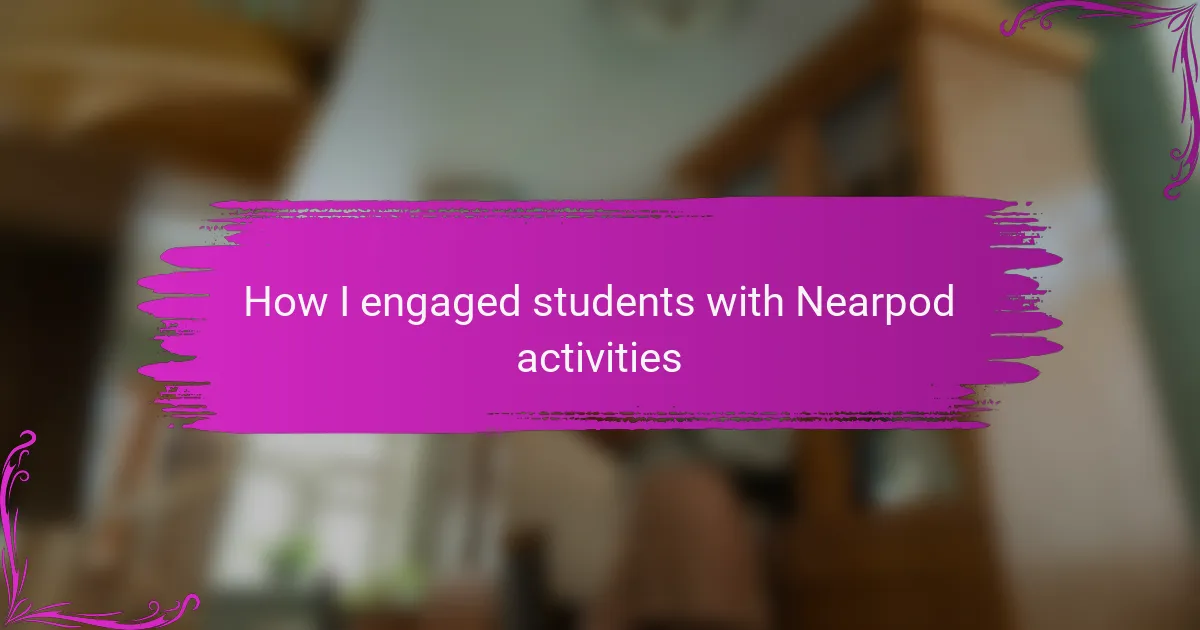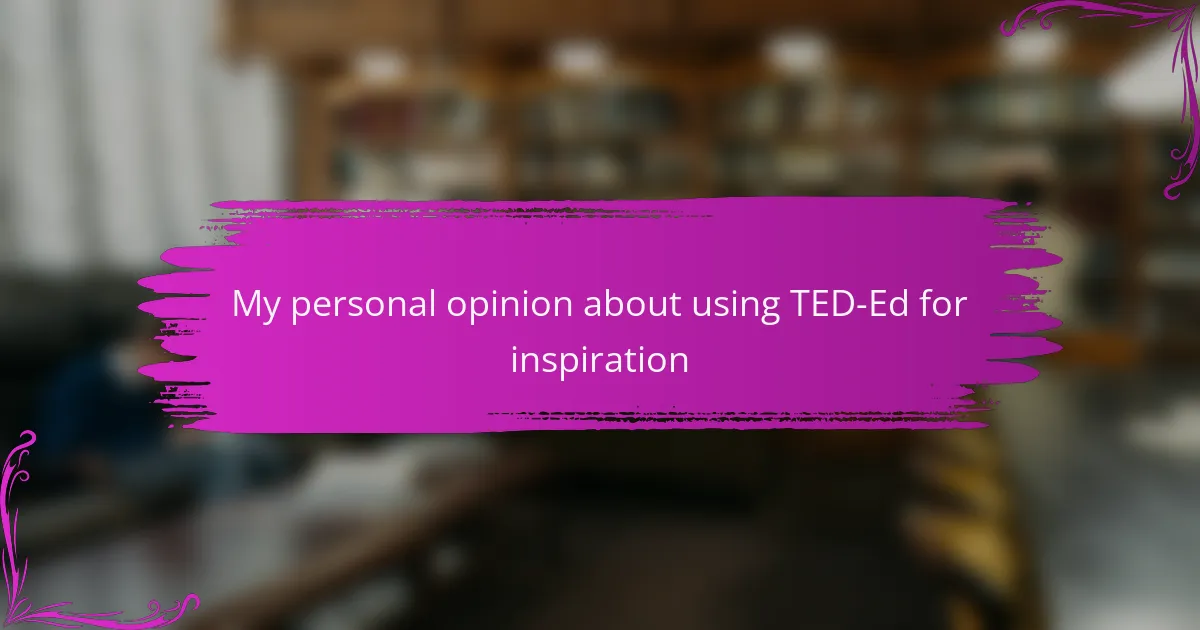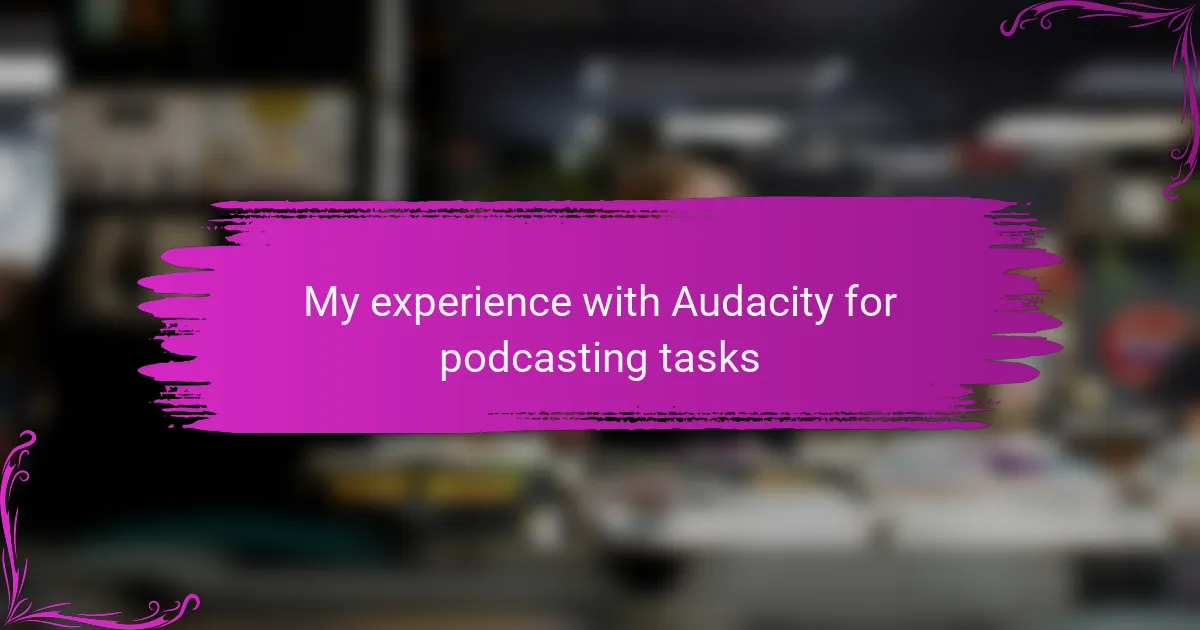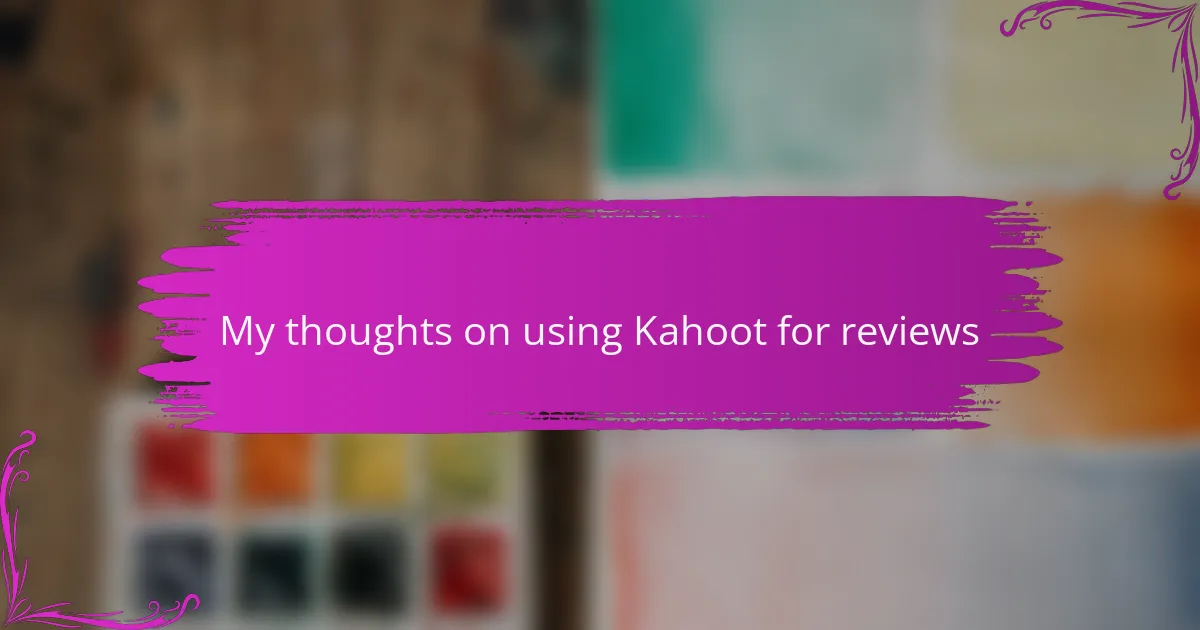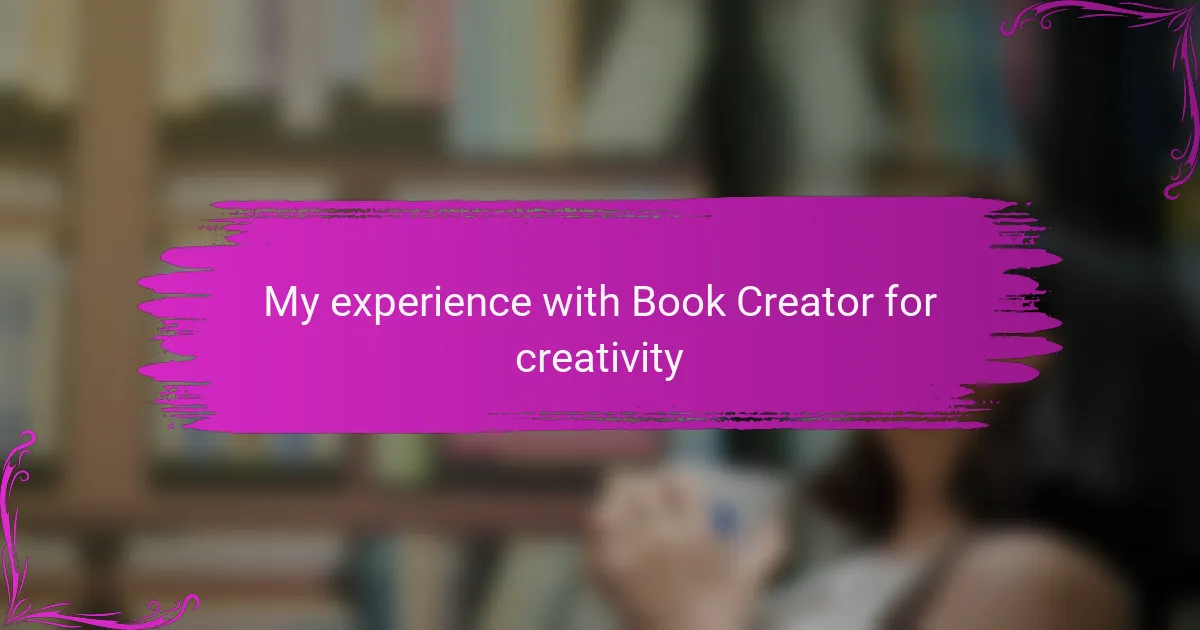Key takeaways
- Incorporating diverse literature resources, like multimedia and interactive platforms, enhances student engagement and fosters critical thinking.
- Nearpod activities, such as interactive quizzes and virtual field trips, cater to different learning styles and promote active participation in literature discussions.
- Engaging students through collaboration and real-time feedback helps build a strong community and encourages deeper understanding of texts.
- Strategic lesson customization and the use of multimedia resources can create a more vibrant and interactive learning environment.
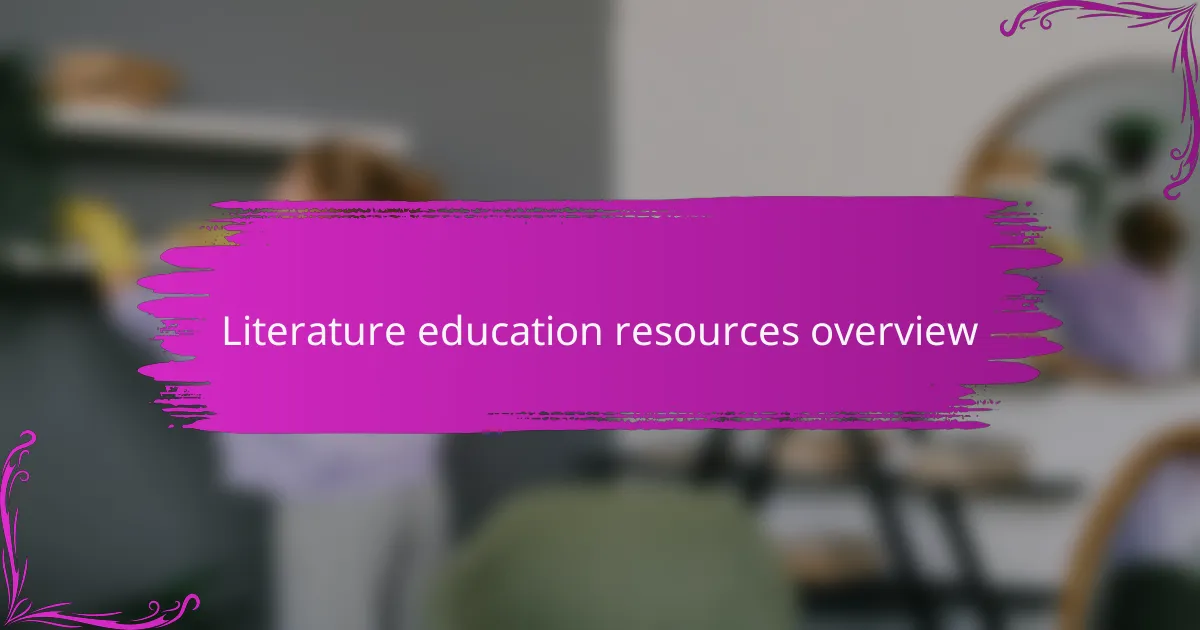
Literature education resources overview
Literature education resources are essential for fostering a love of reading and critical thinking among students. I often find that when I incorporate a variety of materials—like graphic novels, audiobooks, and interactive online platforms—students become more engaged and motivated. It’s quite fascinating to see how different formats can resonate with unique learners, isn’t it?
In my experience, using resources that encourage exploration, such as online literary databases or interactive websites, allows students to dive deeper into texts. For instance, I’ve noticed that when students interact with rich multimedia content, they often form personal connections with the literature that traditional texts alone can’t achieve. Have you ever seen a student light up after discovering a new author or genre? Those moments are truly rewarding.
Additionally, literature resources that offer diverse perspectives are crucial for nurturing empathy and understanding. I remember introducing a multicultural anthology to my class; the conversations that blossomed from those readings were among the most insightful I’ve ever experienced. Isn’t it amazing how literature can open windows to different cultures and experiences?
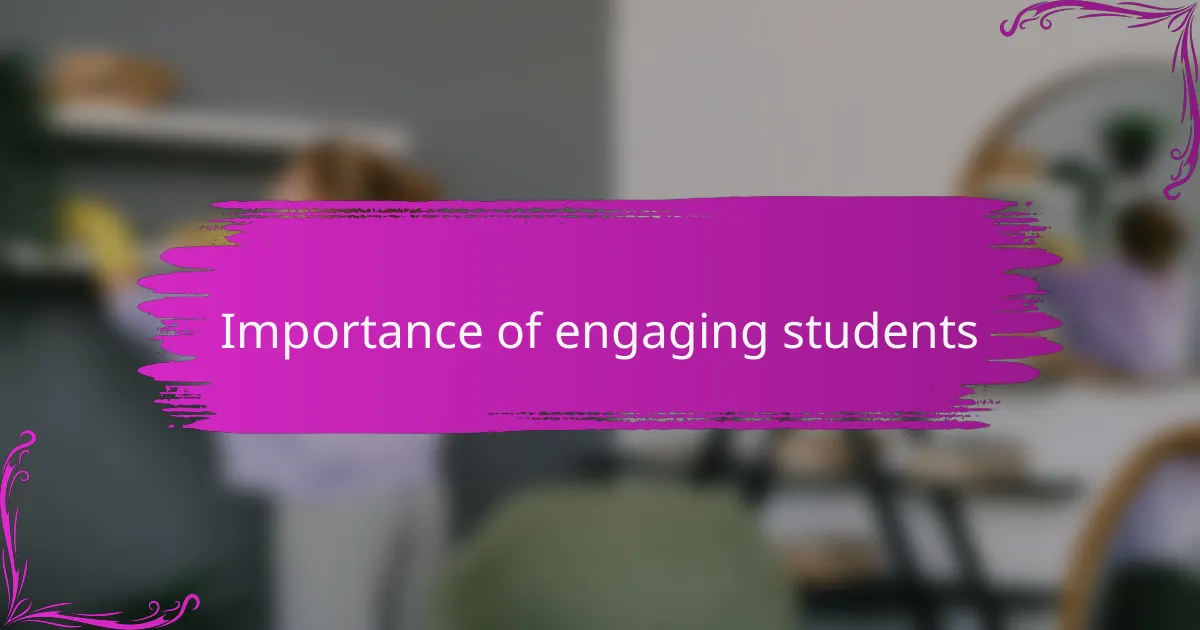
Importance of engaging students
Engaging students is vital because it transforms the learning experience from a passive activity to an active exploration. I’ve seen firsthand how students become curious and invested when they participate in discussions rather than just hearing a lecture. Have you ever noticed how a well-timed question can spark a lively debate in the classroom? It’s those moments that truly ignite a love for literature.
Moreover, when students are actively engaged, they are more likely to take ownership of their learning. I recall a time when I introduced a project that incorporated their personal interests. Suddenly, students who usually sat quietly began sharing their thoughts and ideas with enthusiasm. It was a powerful reminder that engagement can help bring out voices that might otherwise remain unheard.
Lastly, student engagement is essential for fostering critical thinking skills. I often encouraged my students to analyze plots through interactive activities that challenged their interpretations. Watching their confidence grow as they defended their viewpoints reinforced my belief that engagement goes beyond just comprehension; it builds lasting analytical skills for their future. How have you seen engagement impact your students’ learning journeys?
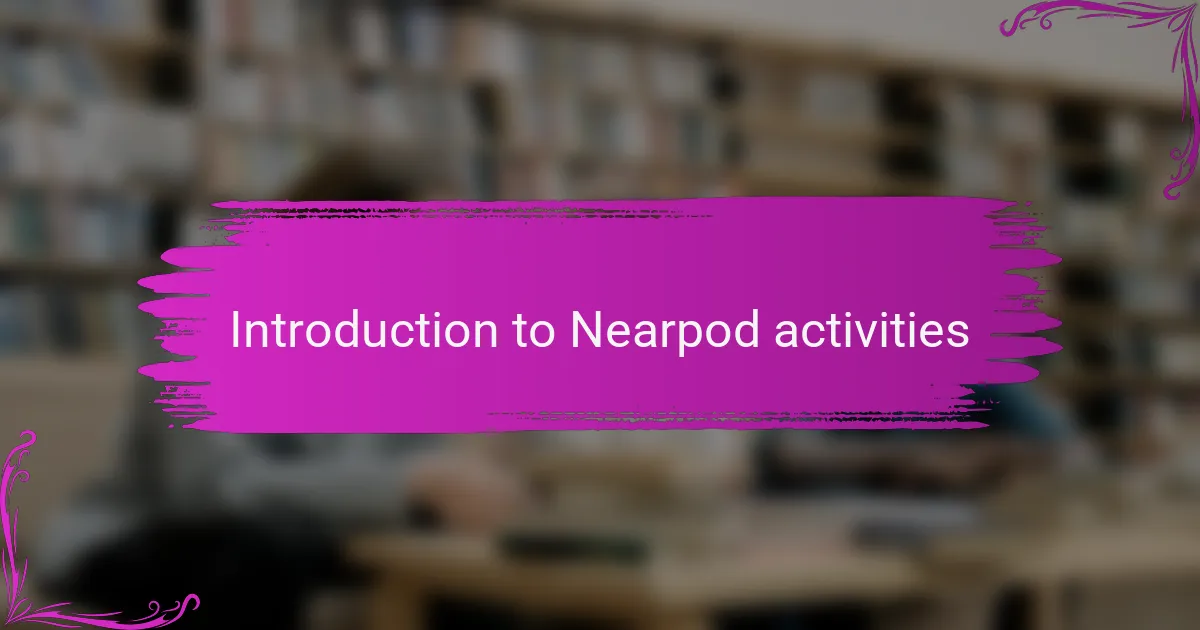
Introduction to Nearpod activities
Nearpod activities are a game-changer for engaging students, especially in the realm of literature education. I remember my first experience with Nearpod; it revolutionized how I presented literary concepts by allowing me to incorporate interactive elements directly into my lessons. With its wide variety of features, I found that students became more involved and excited about literature.
One of the most exciting aspects of Nearpod is its ability to cater to different learning styles. I saw students who usually shied away from participation open up in ways I hadn’t anticipated. By integrating quizzes, polls, and virtual field trips, I was able to make literature come alive in the classroom, sparking discussions that resonated on a personal level.
Here’s a quick comparison of some key features of Nearpod:
| Feature | Benefit |
|---|---|
| Interactive Quizzes | Enhances student engagement and understanding |
| Virtual Reality Experiences | Brings literature contexts to life, creating immersive learning |
| Homework Assignments | Allows for flexible learning beyond the classroom |

Benefits of using Nearpod in literature
Using Nearpod in literature brings a multitude of benefits that can deeply enhance the learning experience. One significant advantage is the platform’s interactive capabilities, which transform traditional lessons into engaging adventures. I remember an instance where students participated in a live quiz about a novel we were reading; their excitement as they competed in real time was palpable. It was one of those moments that showed me how interactive elements can elevate both energy and understanding in the classroom.
Another noteworthy benefit of Nearpod is its adaptability to diverse learning styles. I recall a student who often struggled with text-heavy lessons, but when I introduced a Nearpod activity that integrated visuals and audio clips, their engagement soared. This difference highlighted how accessible literature can be when using multimedia resources. Have you ever watched a reluctant reader come to life through a captivating presentation? It’s truly a delightful transformation.
Moreover, Nearpod fosters collaboration among students, encouraging them to share their interpretations of texts in a shared digital space. I often create group discussions where students can respond to prompts and interact with each other’s ideas in real time. Observing them build on one another’s thoughts not only enriched their understanding but also built a sense of community. Isn’t it wonderful when literature encourages not just individual reflection but also collective exploration?
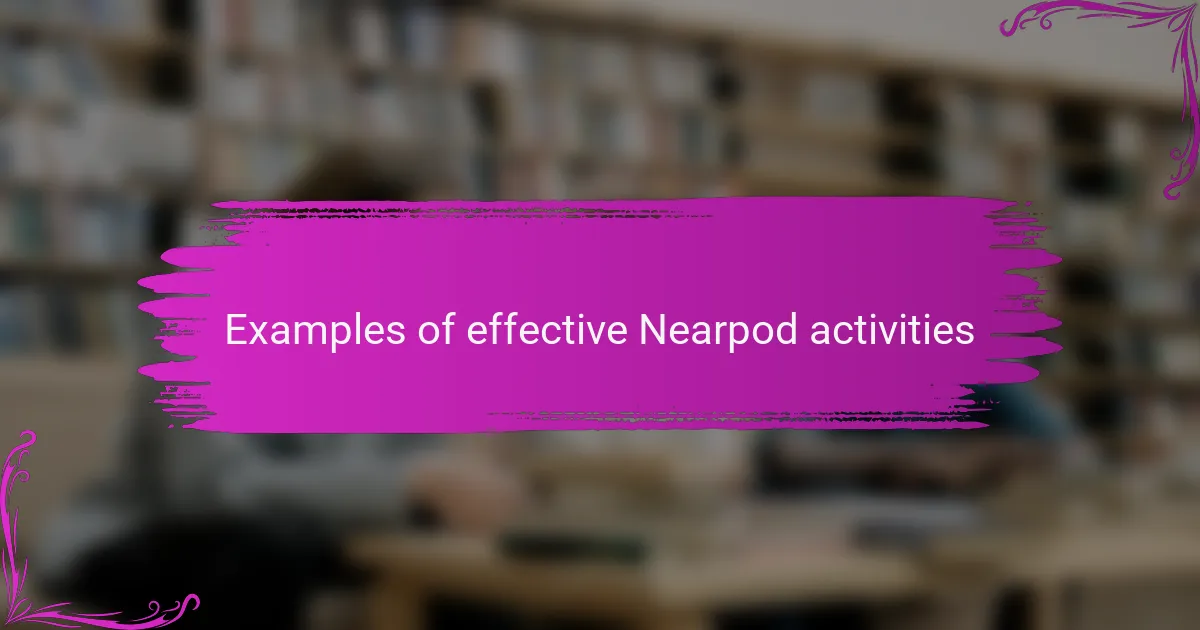
Examples of effective Nearpod activities
Here are a few examples of effective Nearpod activities that I’ve found particularly engaging in my literature classes.
One standout experience was using a Nearpod virtual field trip to explore locations from a novel we were reading. As we “walked” through different settings, students were visibly animated, taking notes and drawing connections between the story and its backdrop. Have you ever felt the energy shift in a classroom when students are truly captivated? That day, I witnessed firsthand how immersing students in the context of a story can deepen their understanding and appreciation.
Another activity I implemented involved interactive quizzes during a poetry unit. I crafted questions that prompted students to analyze figurative language while competing in real time. The banter and friendly rivalry sparked a lively discussion about interpretation. I remember a shy student who typically kept to themselves suddenly declaring their thoughts on a metaphor. How amazing it is when technology opens those doors for students to share their insights?
Lastly, I experimented with using Nearpod’s collaborative boards to allow students to post their thoughts on a character’s development. Watching them engage with each other’s ideas was truly rewarding. It reminded me that literature thrives in conversation and dialogue, and these platforms can facilitate that social learning experience in a meaningful way. How do you encourage student interactions in your literature discussions?
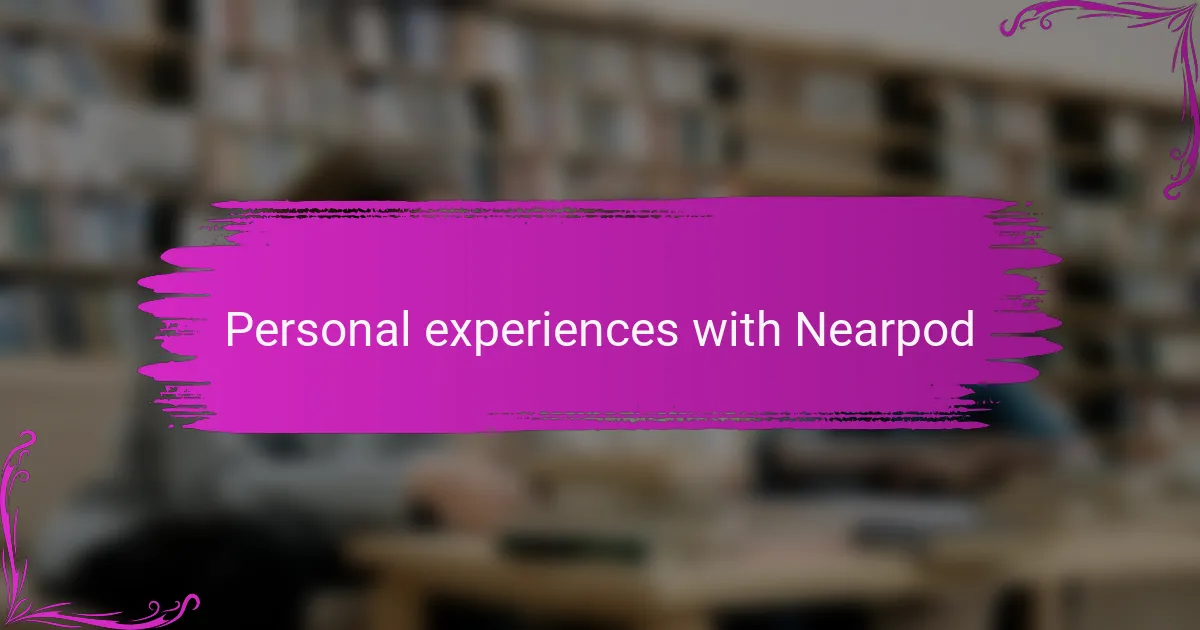
Personal experiences with Nearpod
When I first started using Nearpod in my literature classes, I was amazed by how engaged my students became. I remember a particular lesson on Shakespeare where the interactive polls allowed them to voice their opinions on character motivations. Their excitement was palpable as they realized they weren’t just passive listeners; they were active participants in our discussions.
One of my favorite features has been the VR experiences. I once took my students on a virtual tour of the Globe Theatre, and the look of awe on their faces was unforgettable. It sparked a rich discussion about the historical context of the plays. Seeing their eyes light up made me realize just how powerful technology can be in bridging gaps in literacy and history.
- Interactive quizzes kept students attentive and eager to answer.
- The collaborative board feature allowed for shared insights and discussion.
- Using multimedia resources made classic texts more relatable and engaging.
- Virtual field trips provided context and a deeper understanding of the literature.
- Real-time feedback helped me tailor follow-up lessons based on student responses.
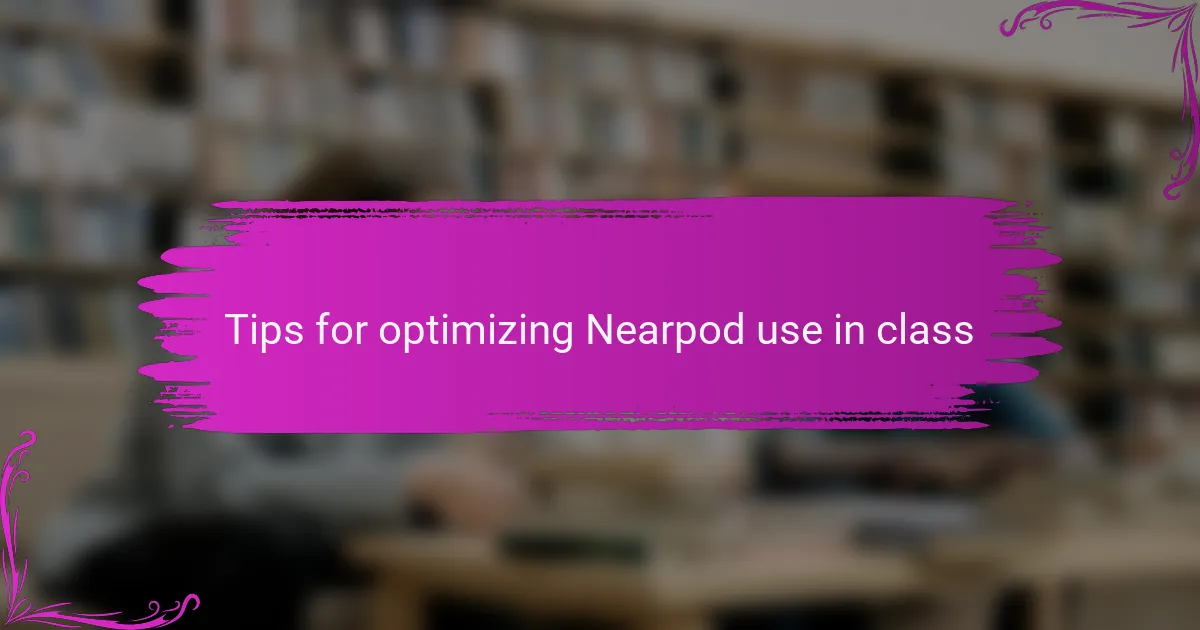
Tips for optimizing Nearpod use in class
When I began using Nearpod, I quickly realized that maximizing its potential required some strategic planning. For instance, tailoring content to fit my students’ interests made lessons more engaging. I remember incorporating interactive quizzes based on popular literature they were reading, which sparked lively discussions and encouraged broader participation from even the quieter students.
To truly optimize Nearpod in your classroom, consider these tips:
- Customize lessons: Adapt lessons to include themes or characters from texts your students love.
- Incorporate multimedia: Use videos and audio clips to enrich the literary experience and cater to different learning styles.
- Encourage collaboration: Utilize the collaborative features, like drawing or brainstorming activities, to foster teamwork among students.
- Monitor student progress: Take advantage of real-time data to assess comprehension and adjust your teaching strategies on the fly.
- Promote student agency: Allow students to choose which Nearpod lessons they want to explore, giving them a sense of ownership over their learning.
These strategies not only enhance understanding but also help create a more vibrant, interactive learning environment.
